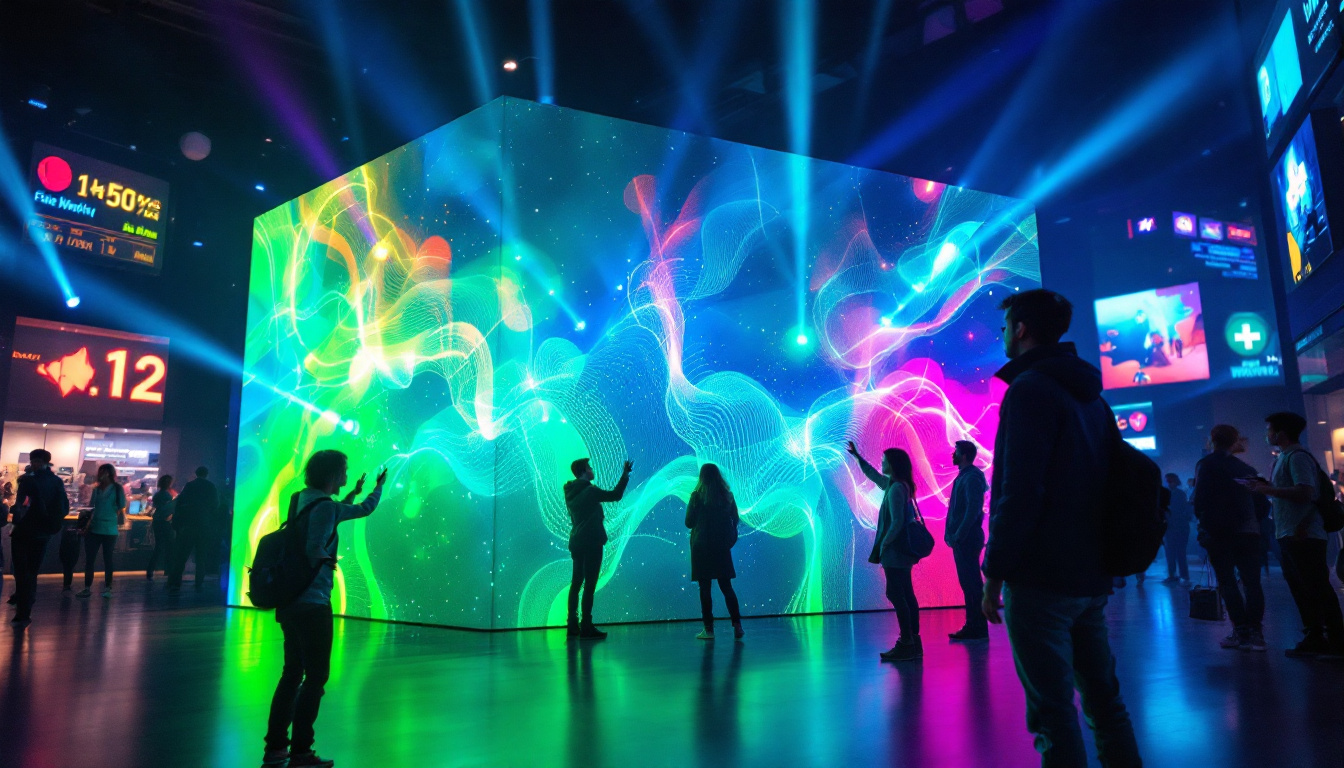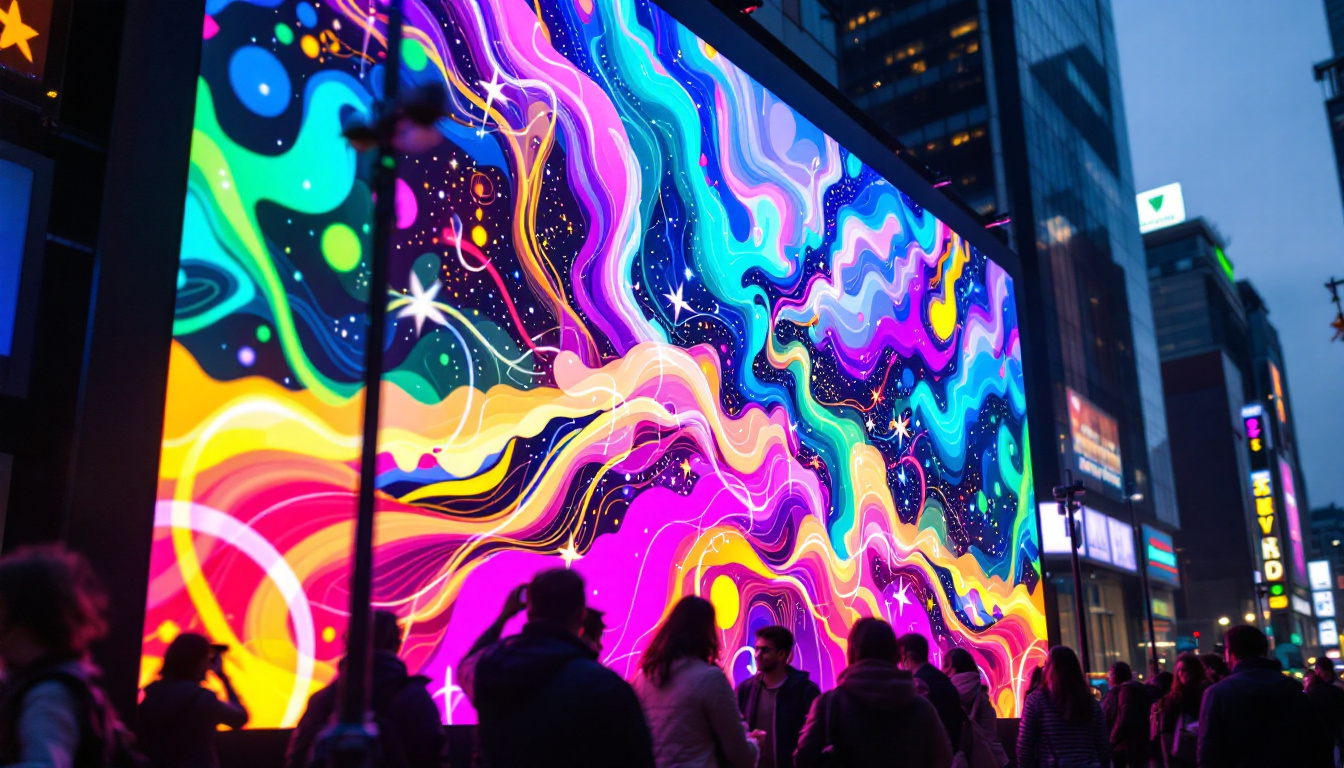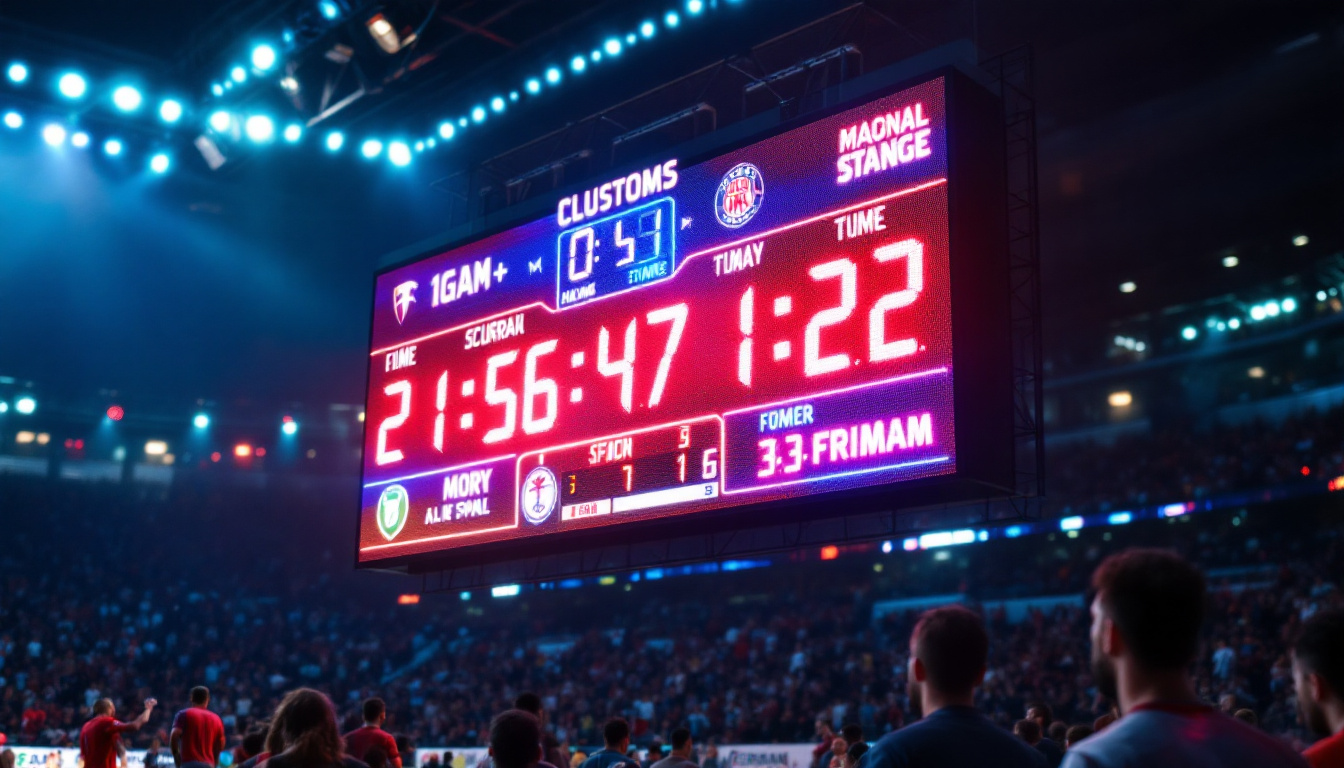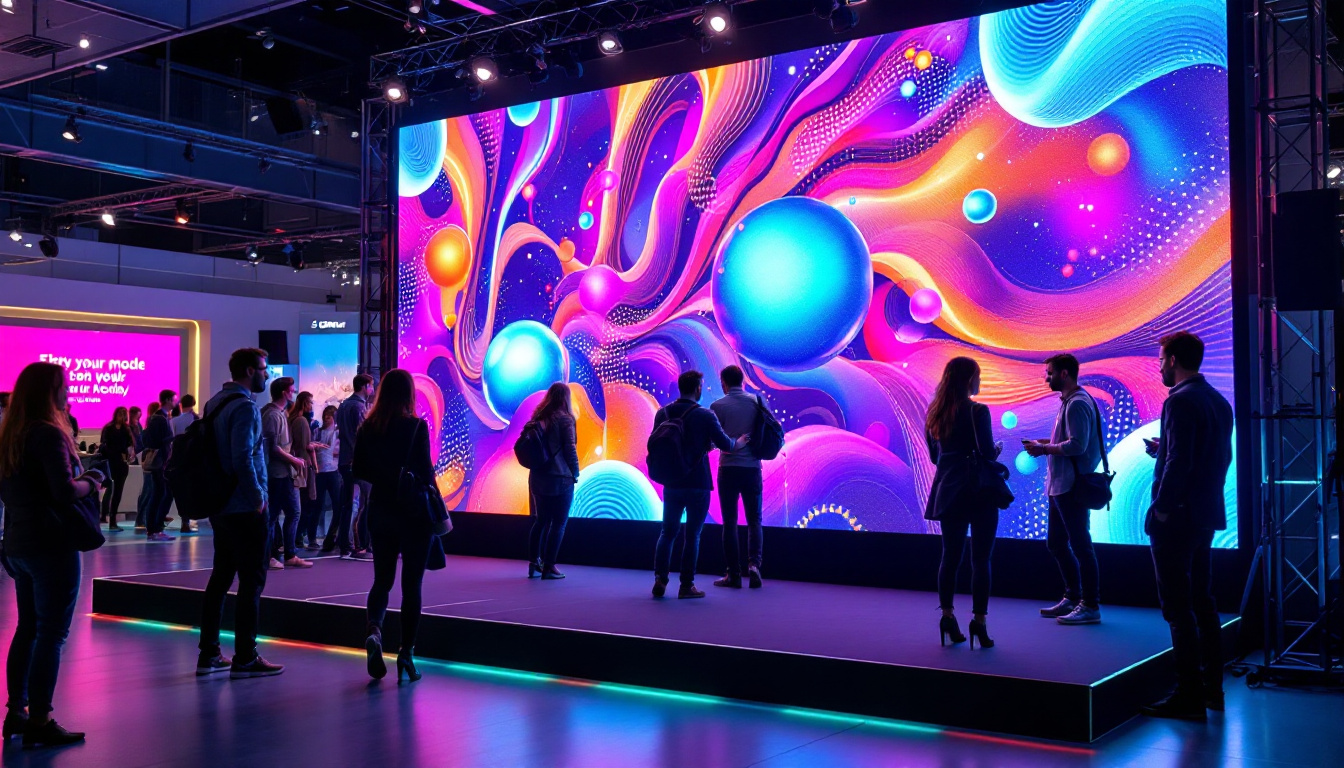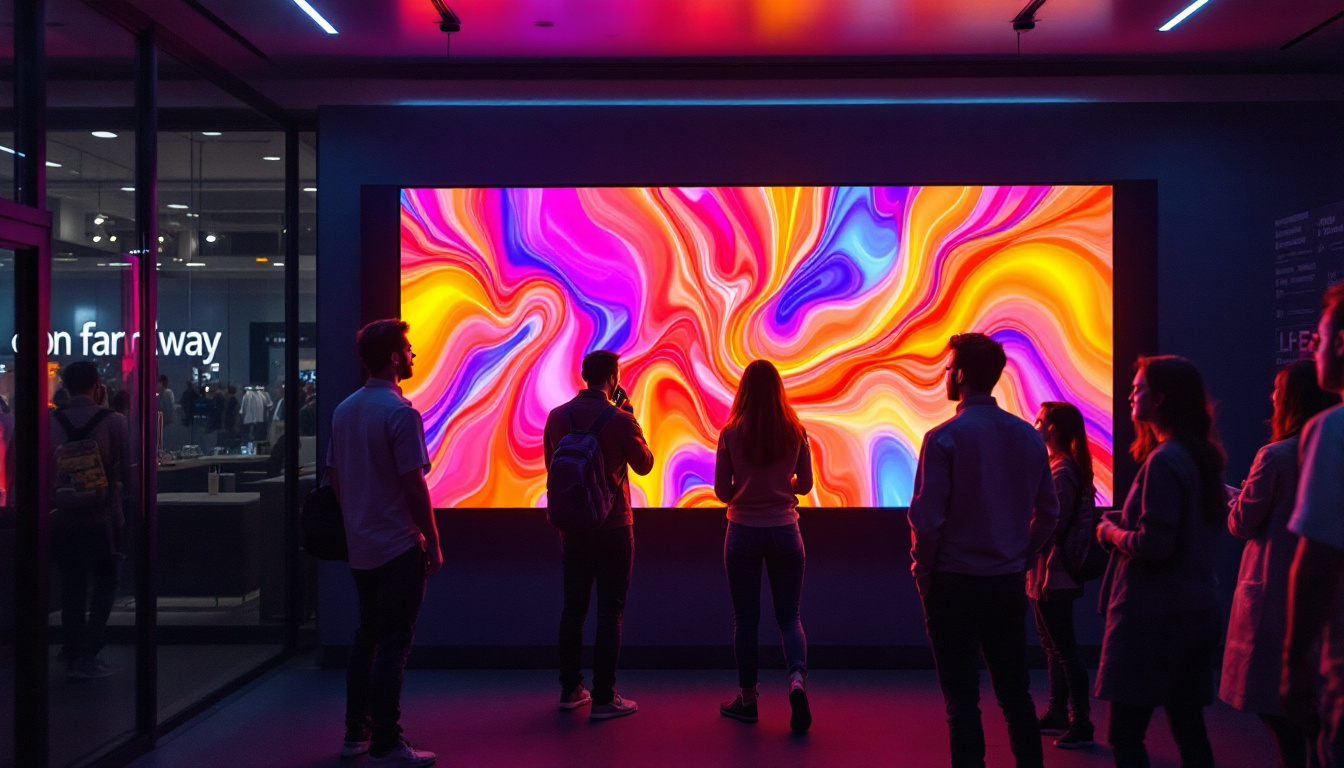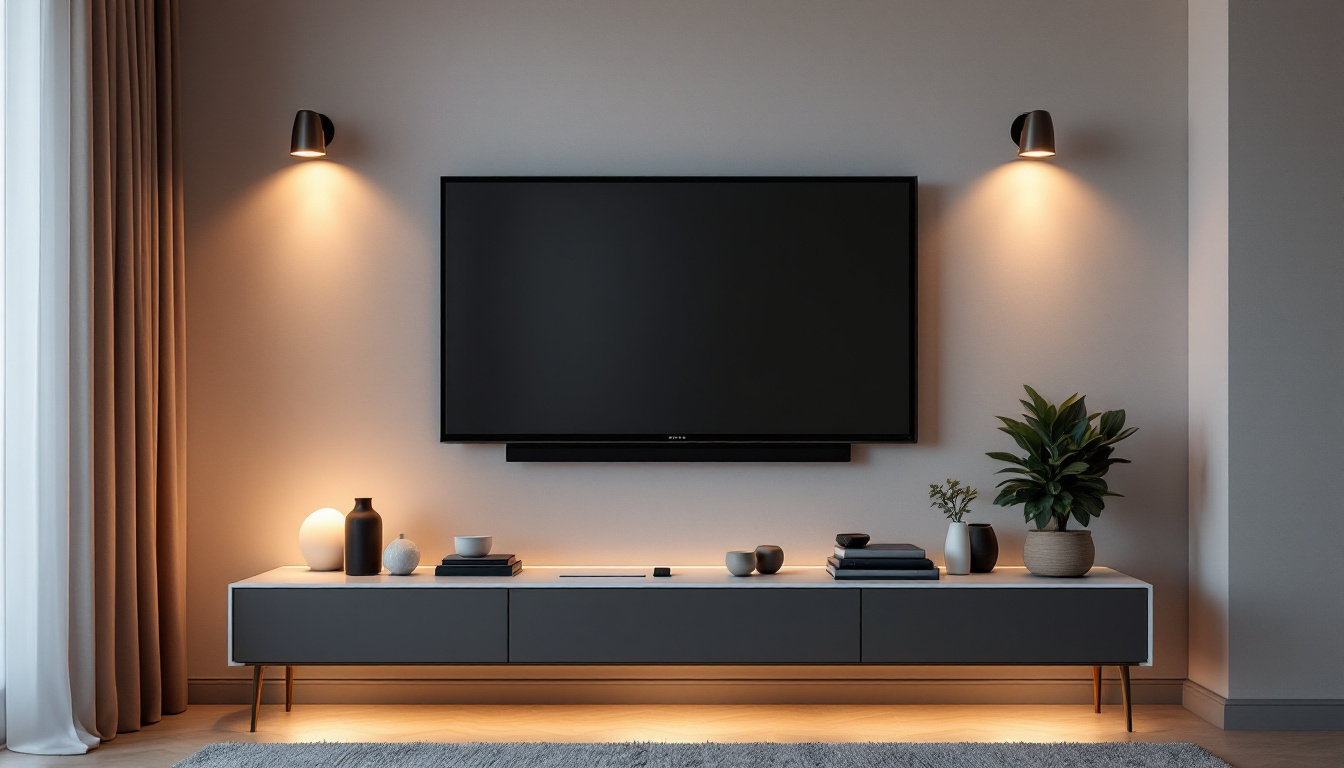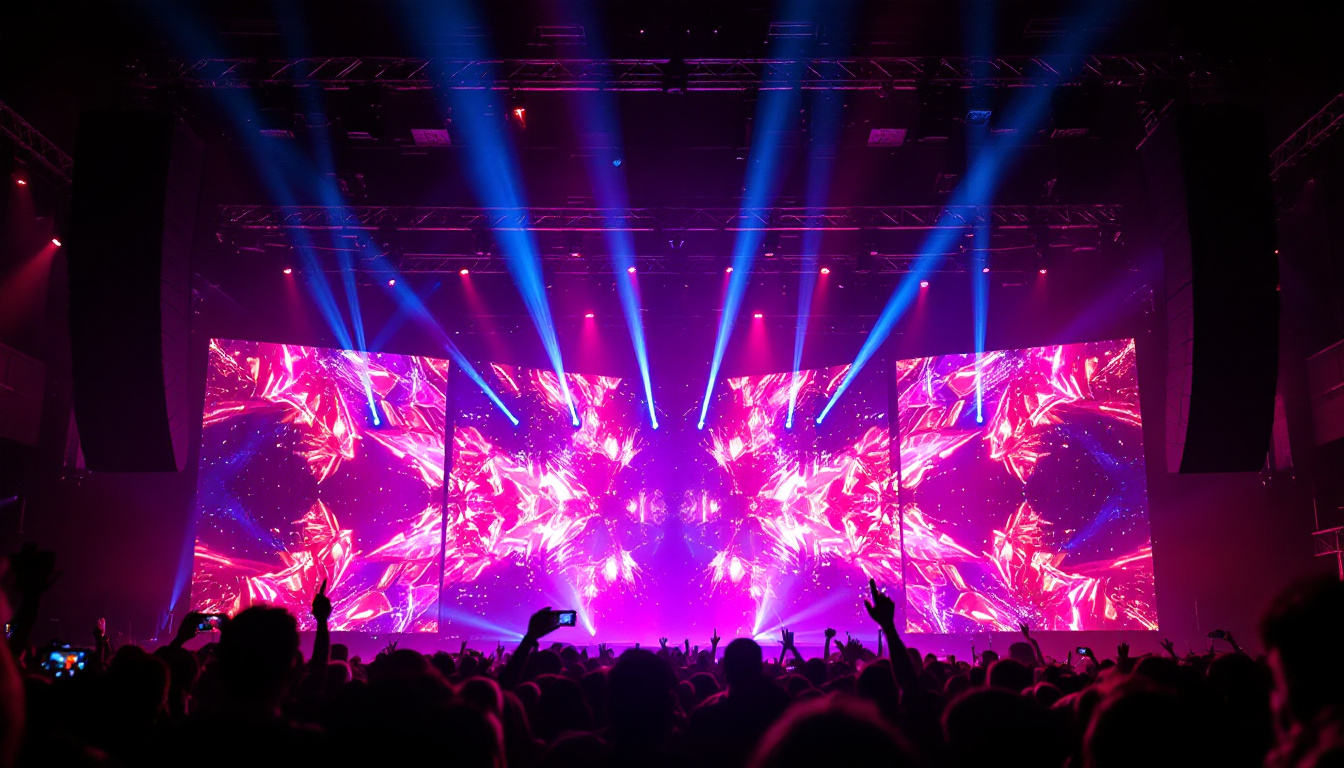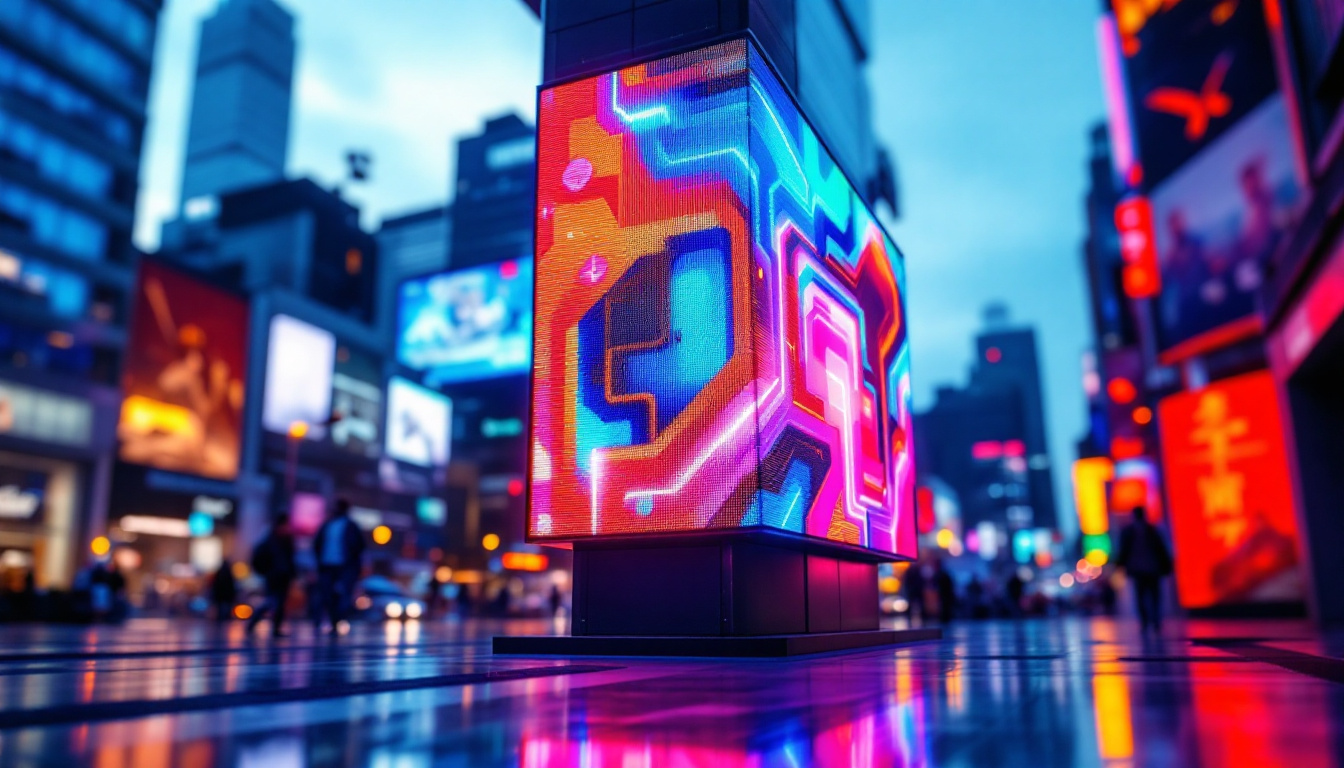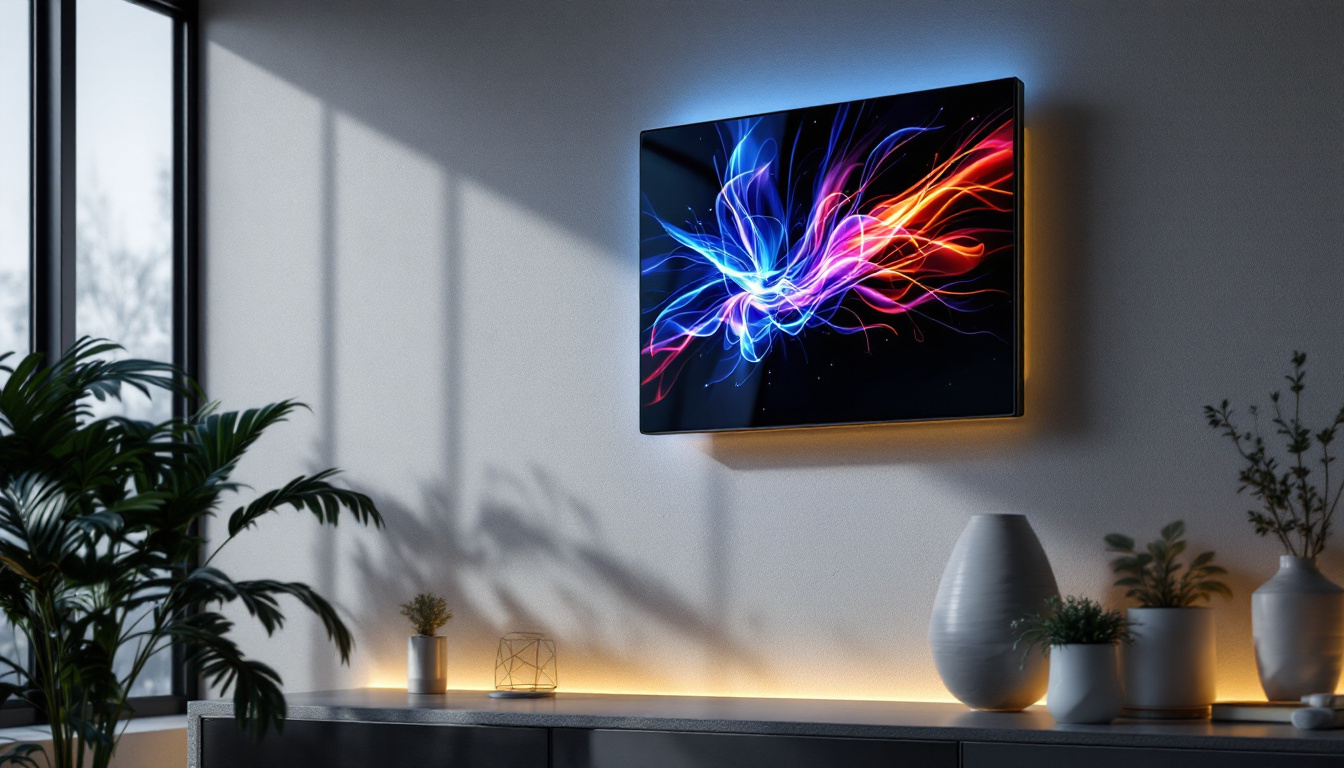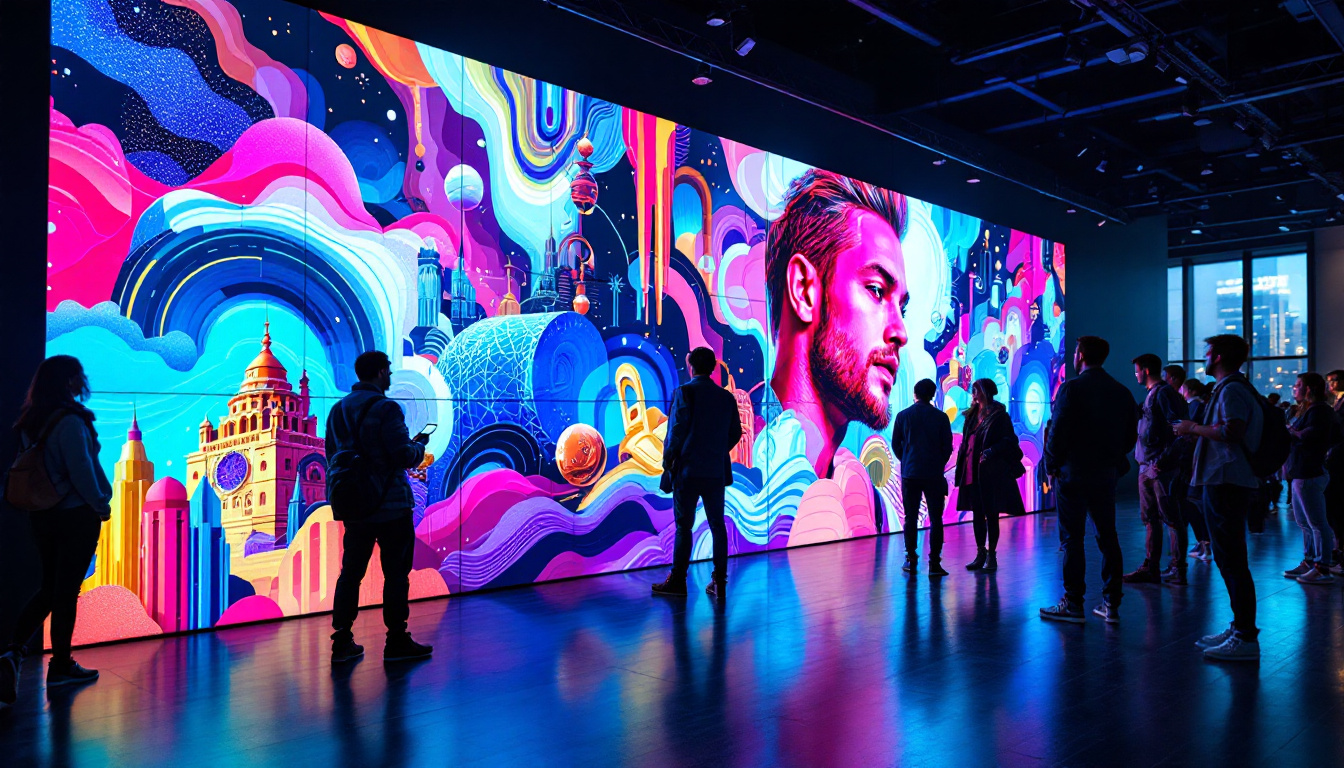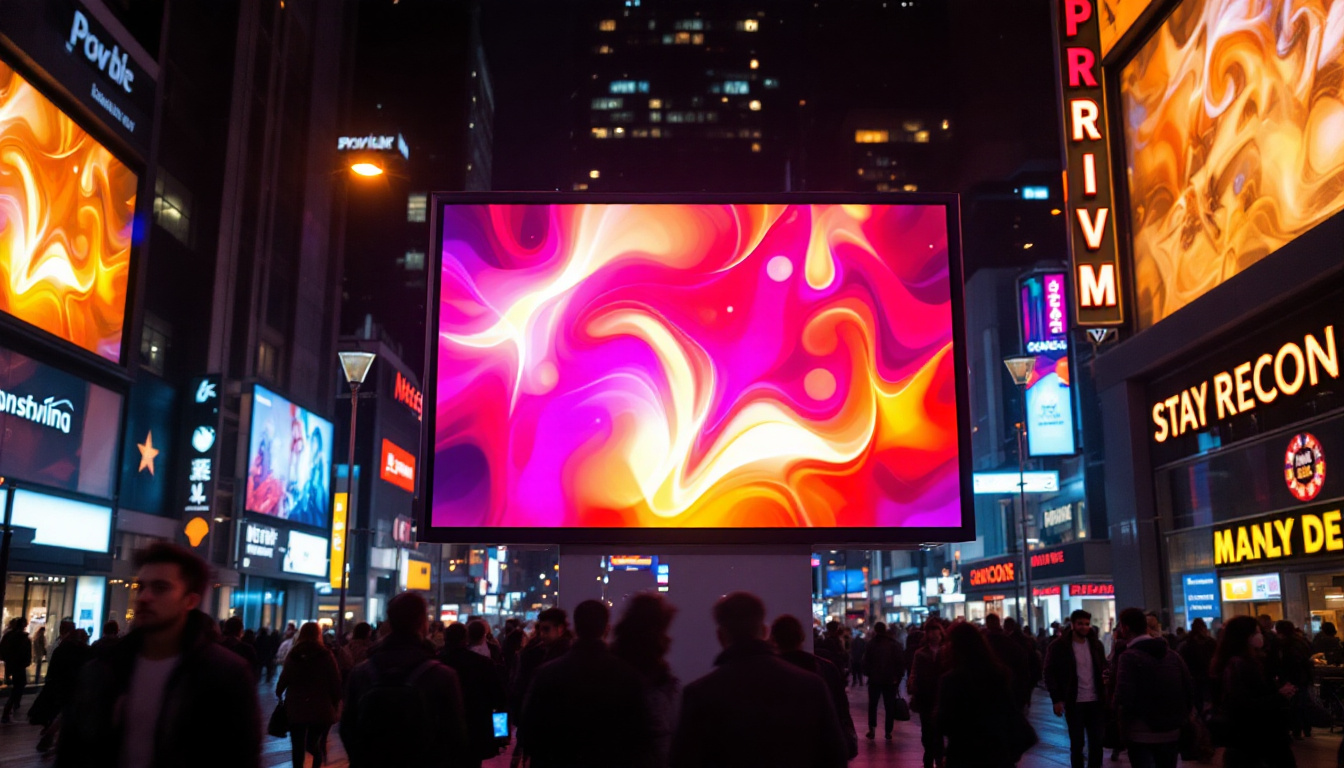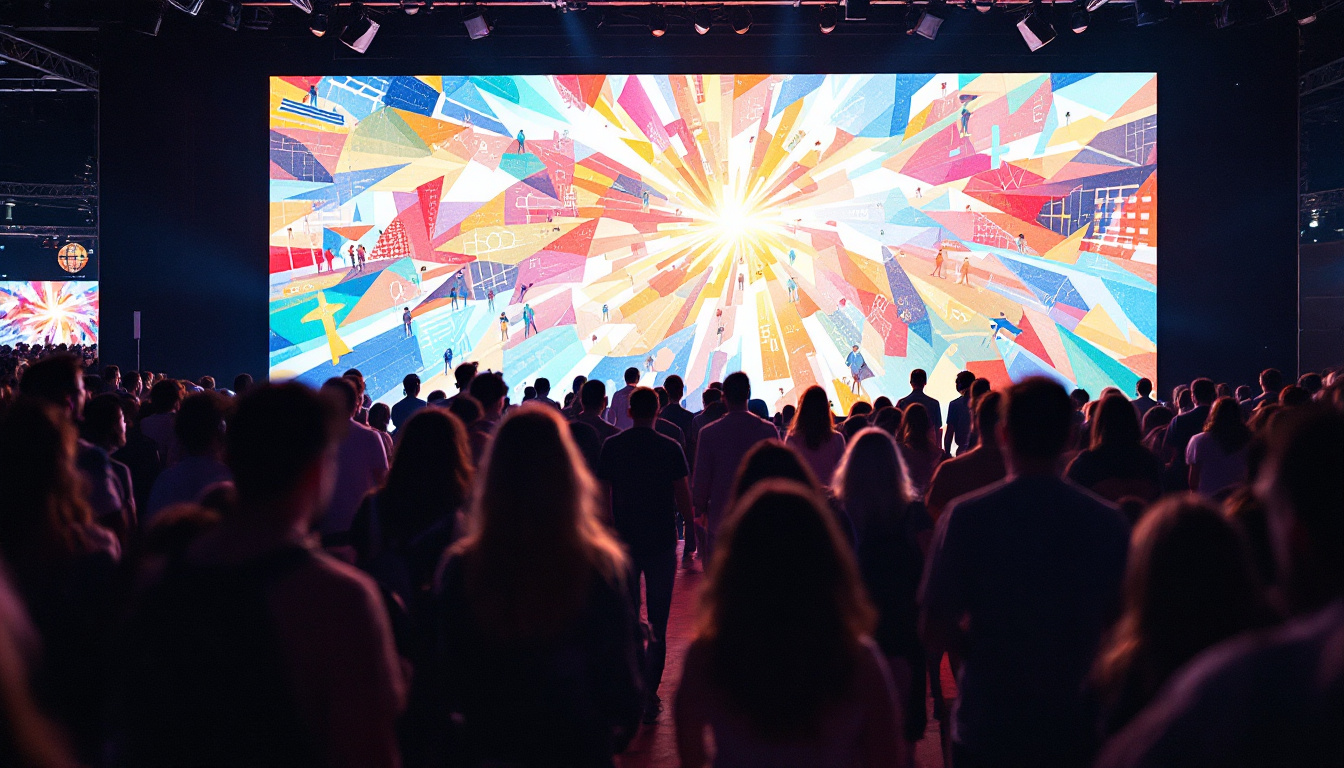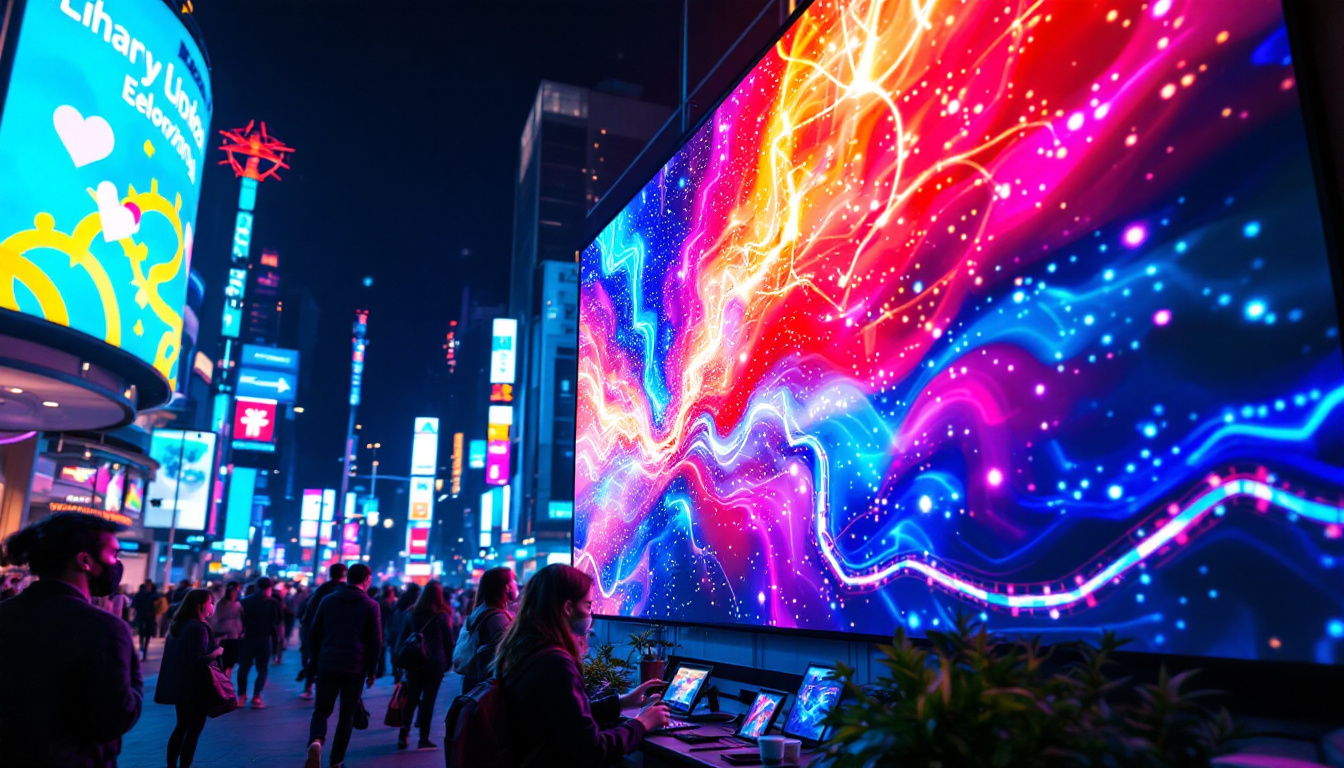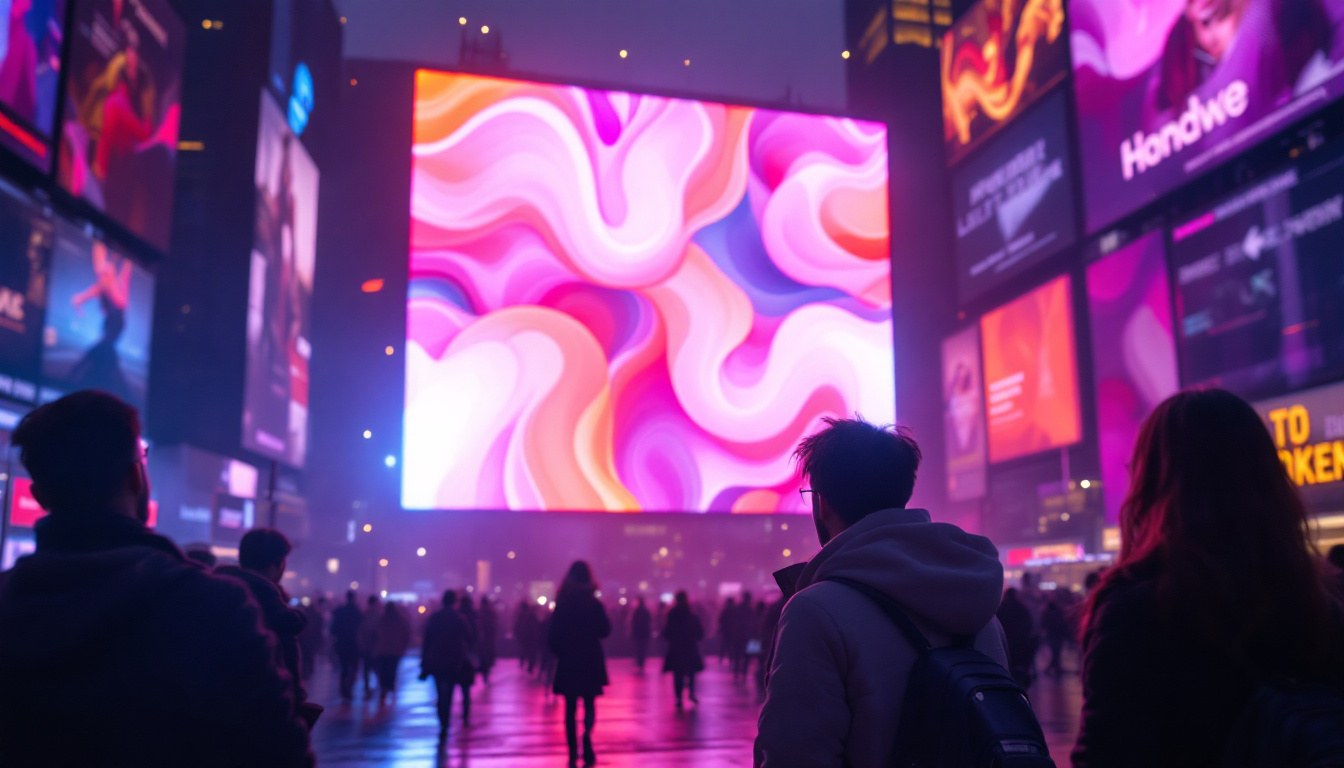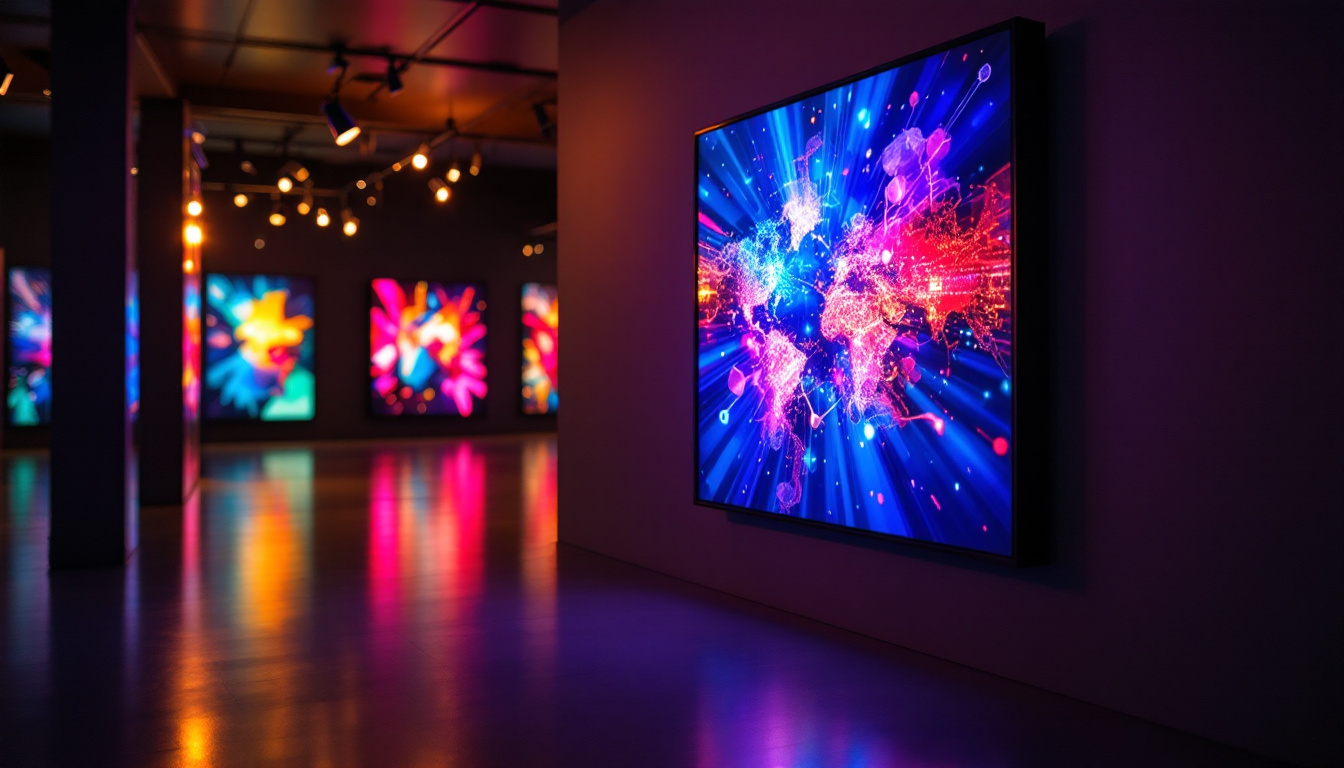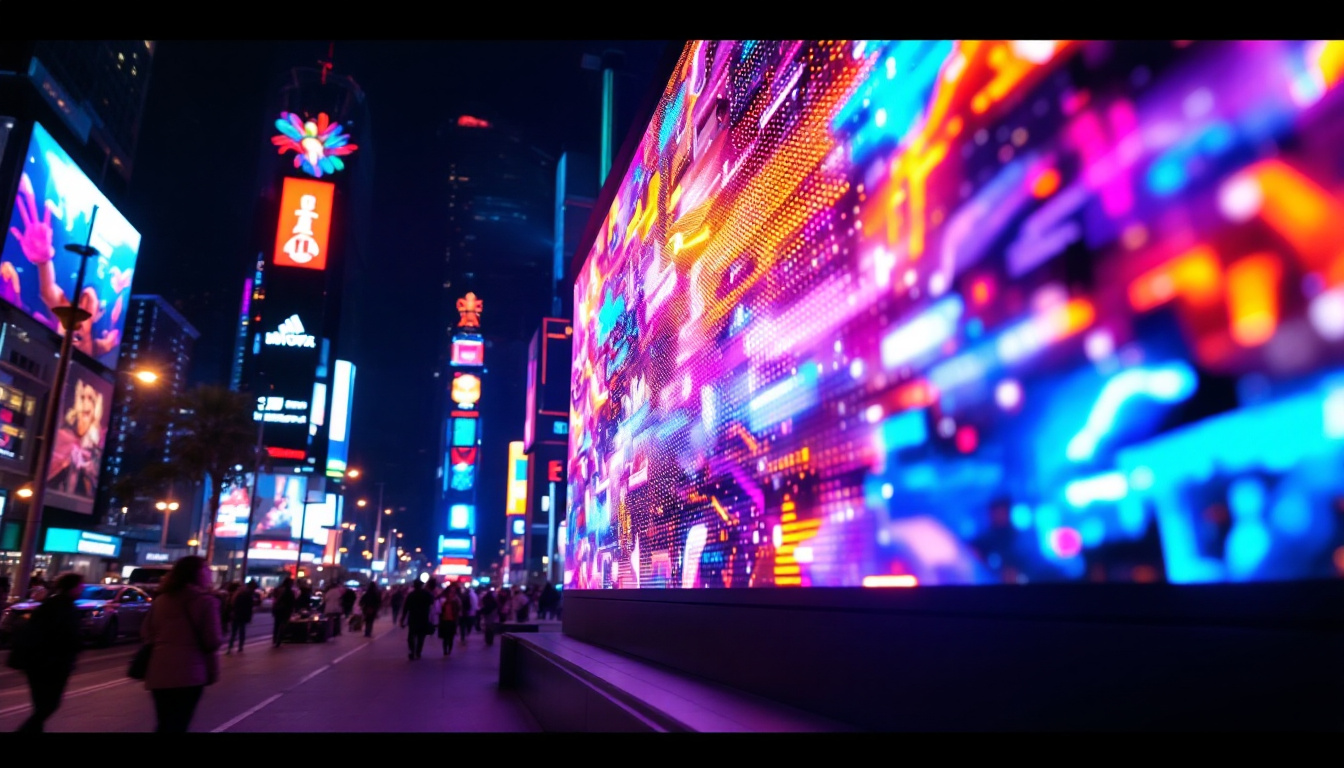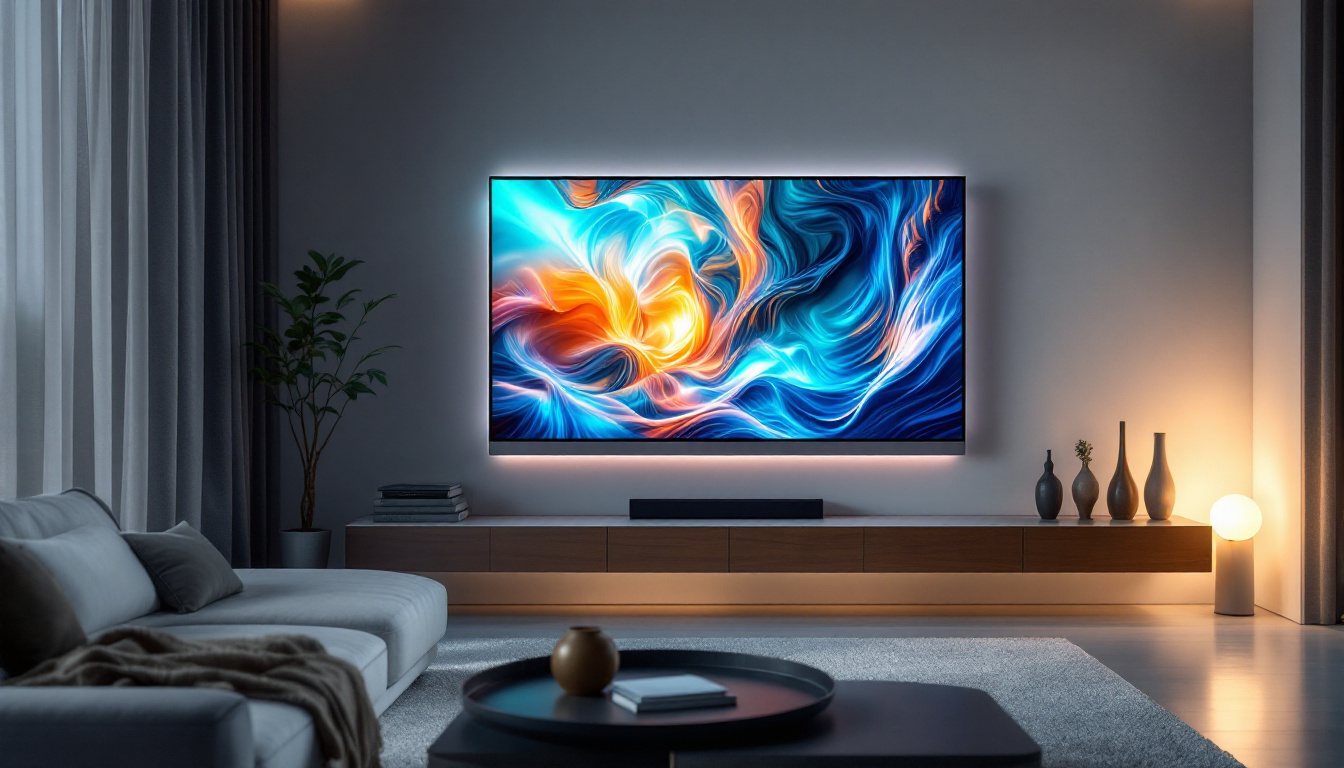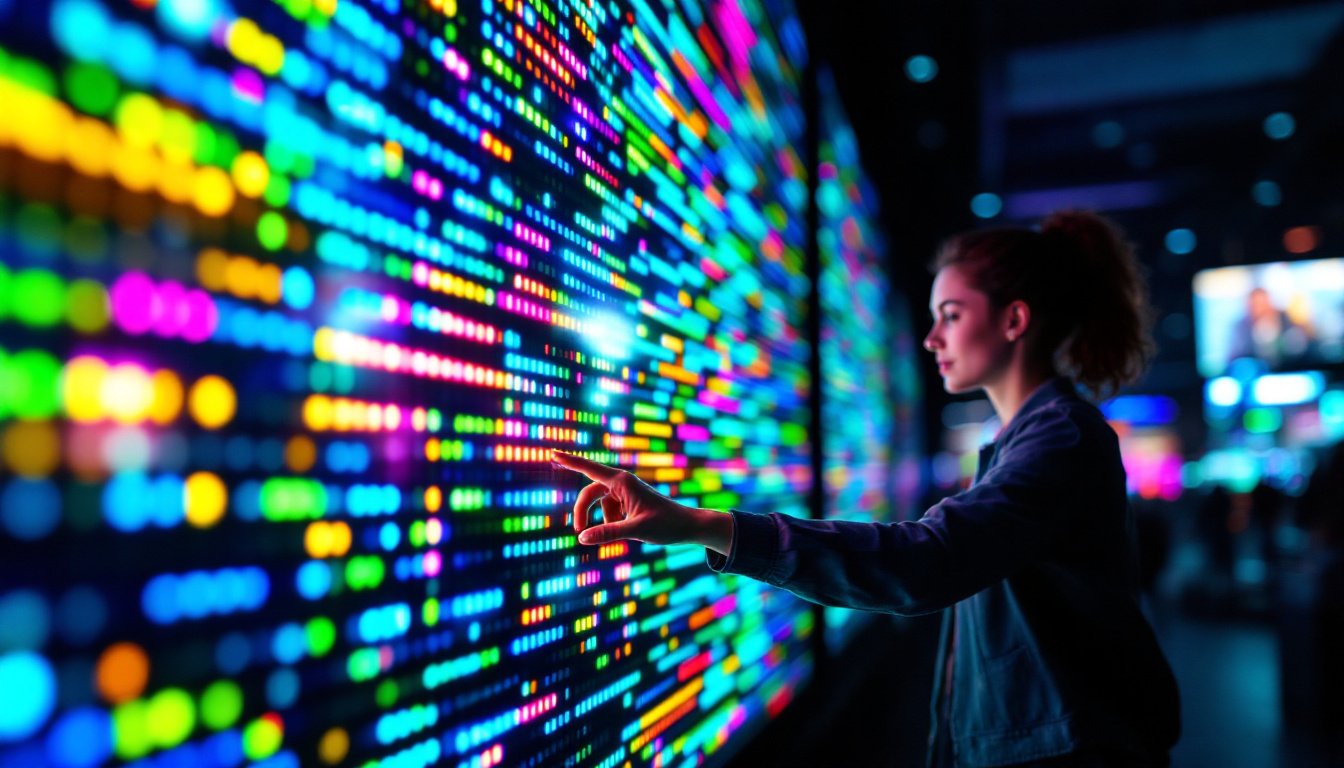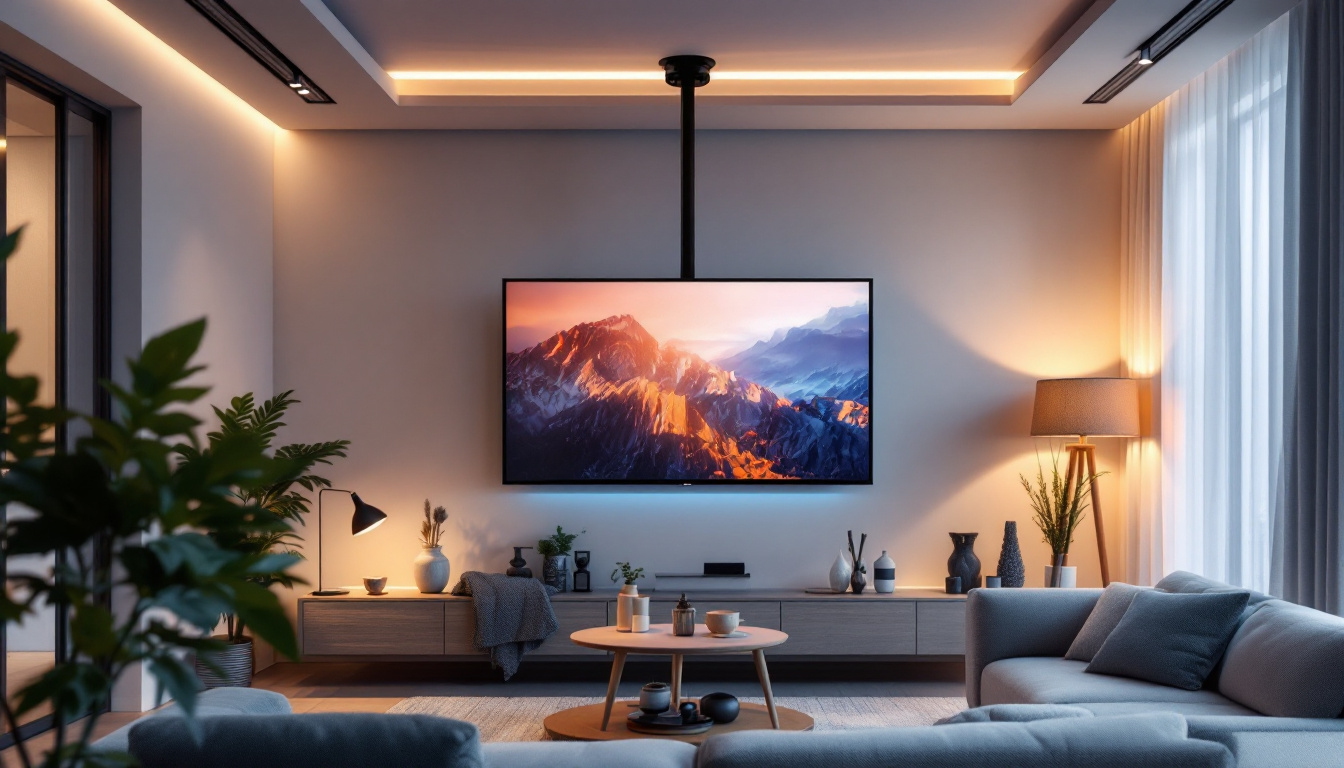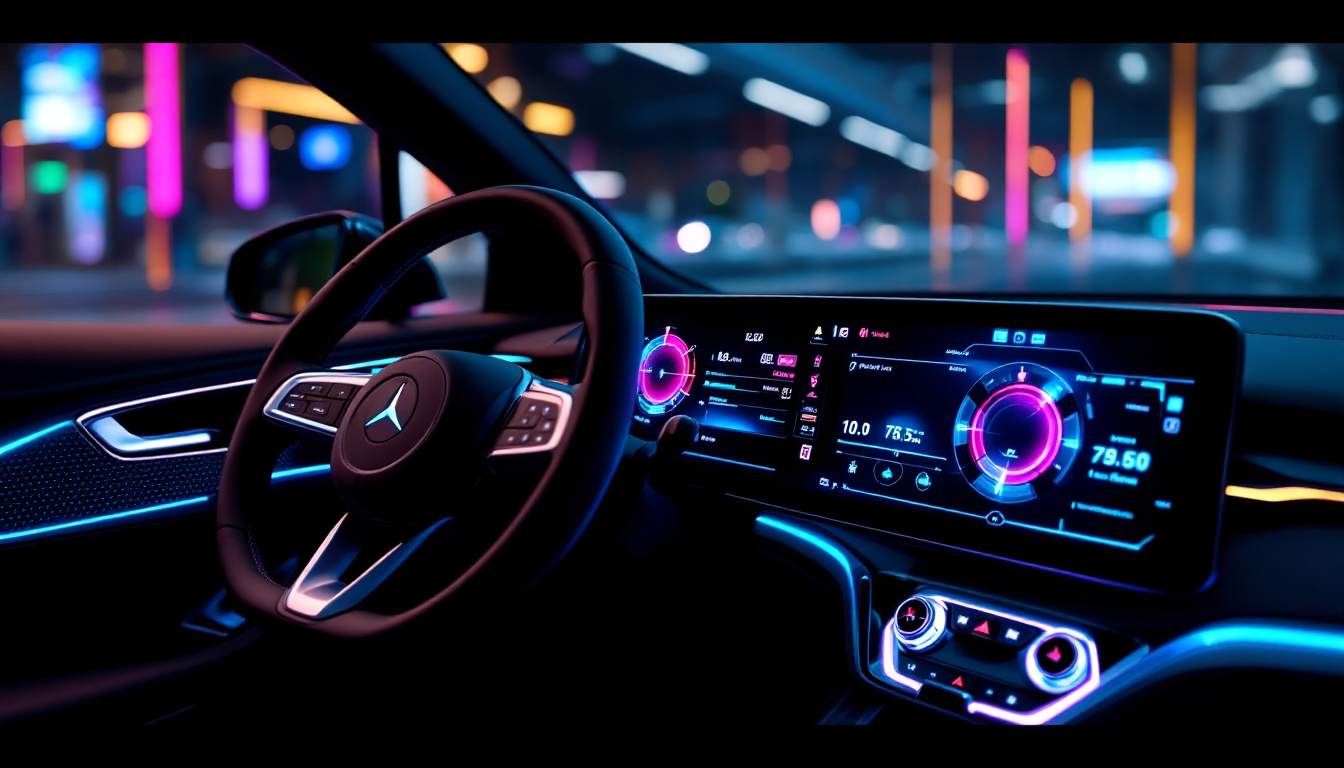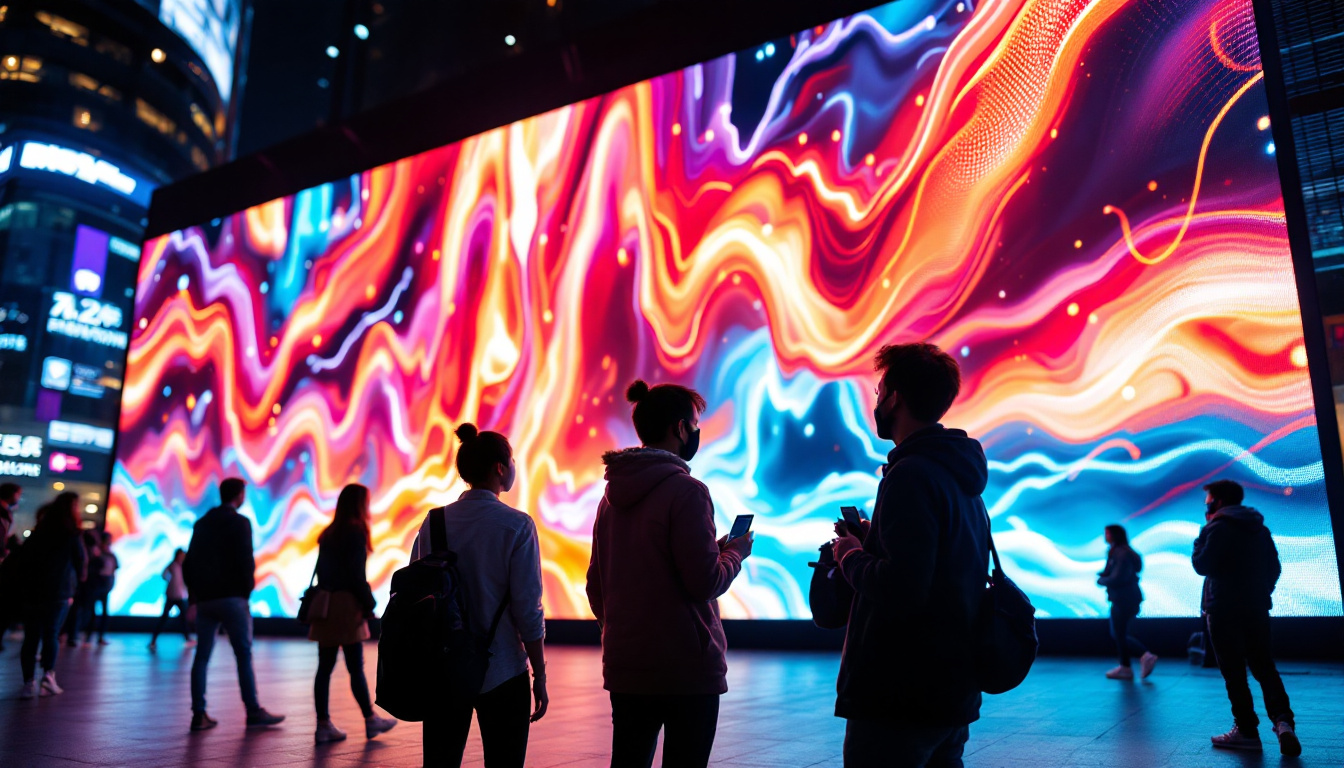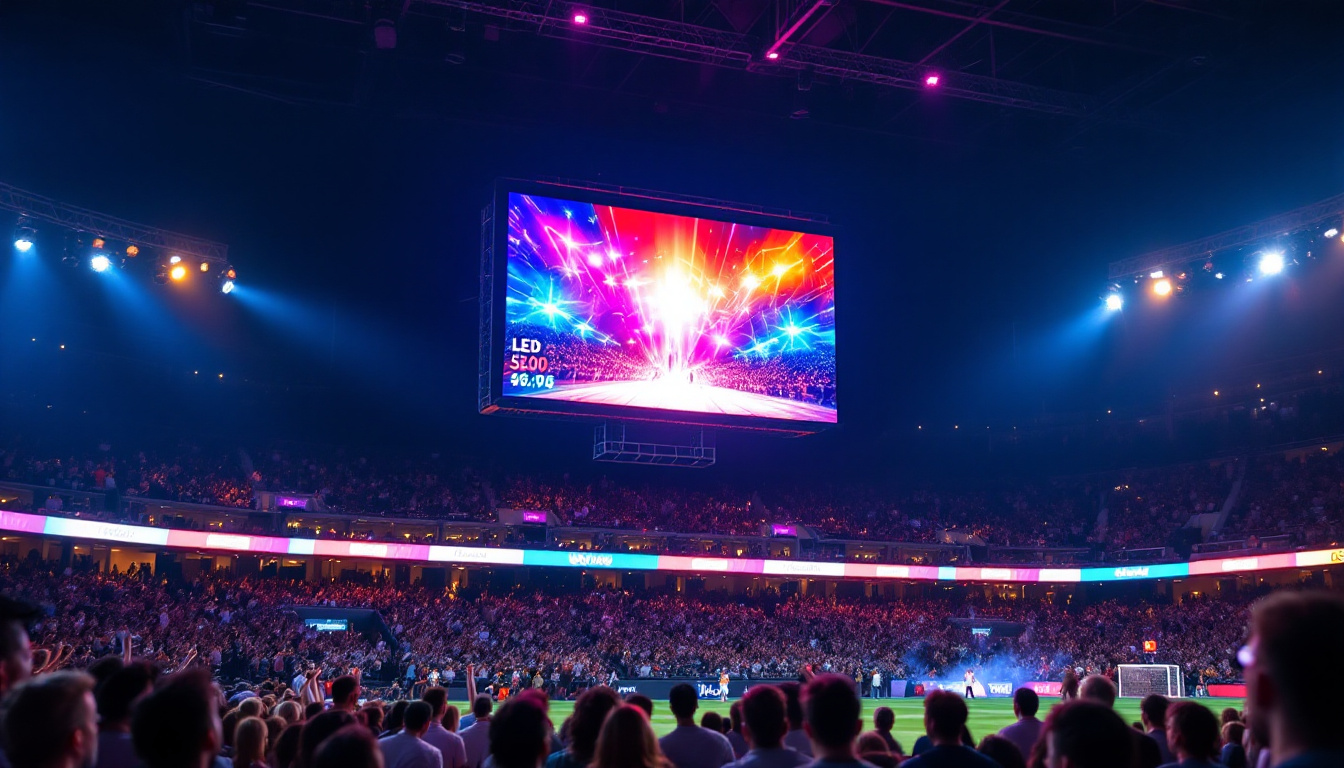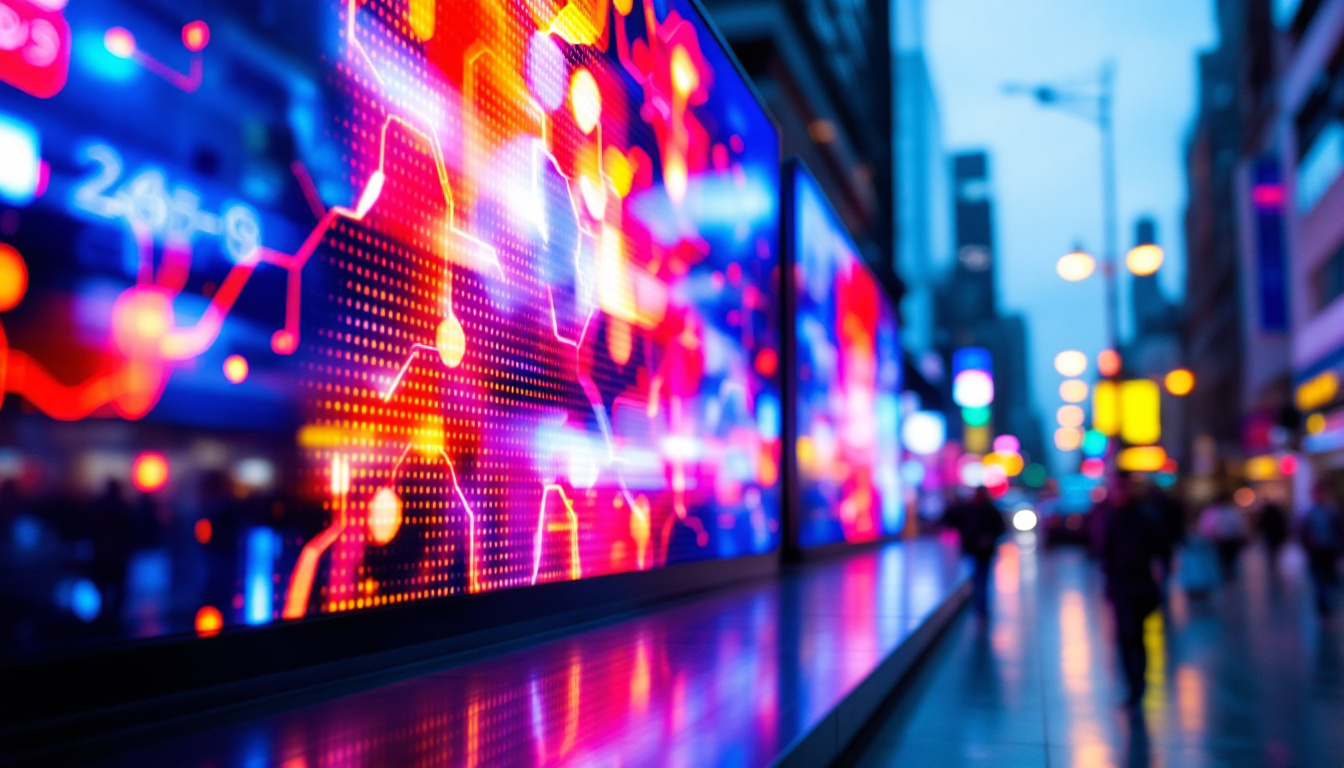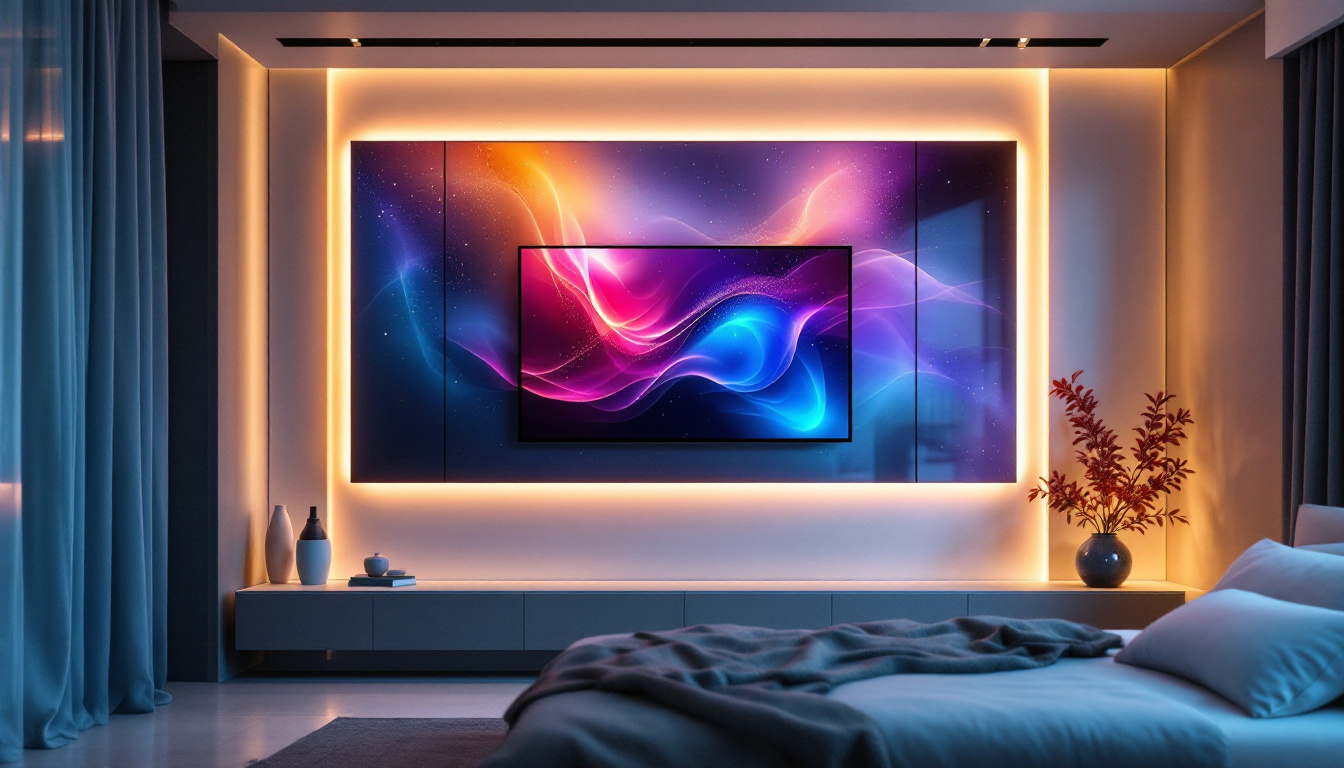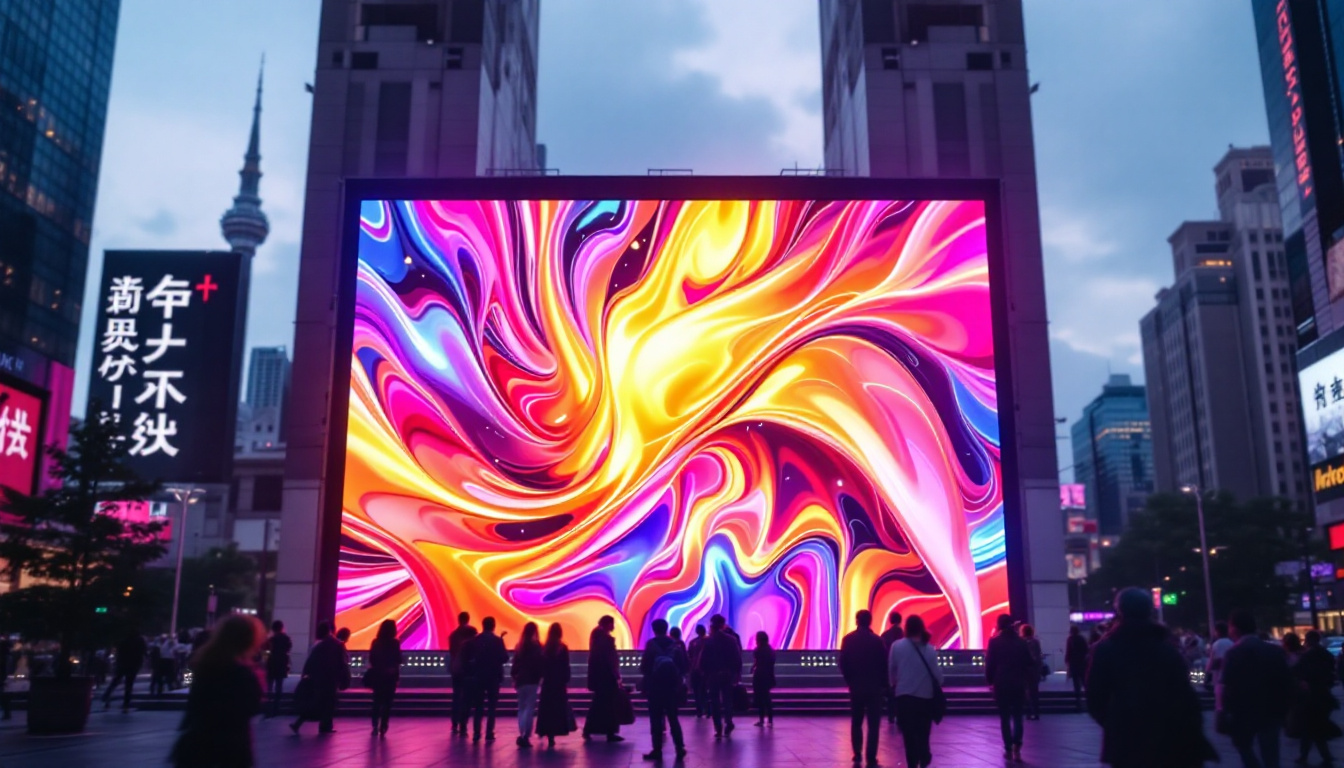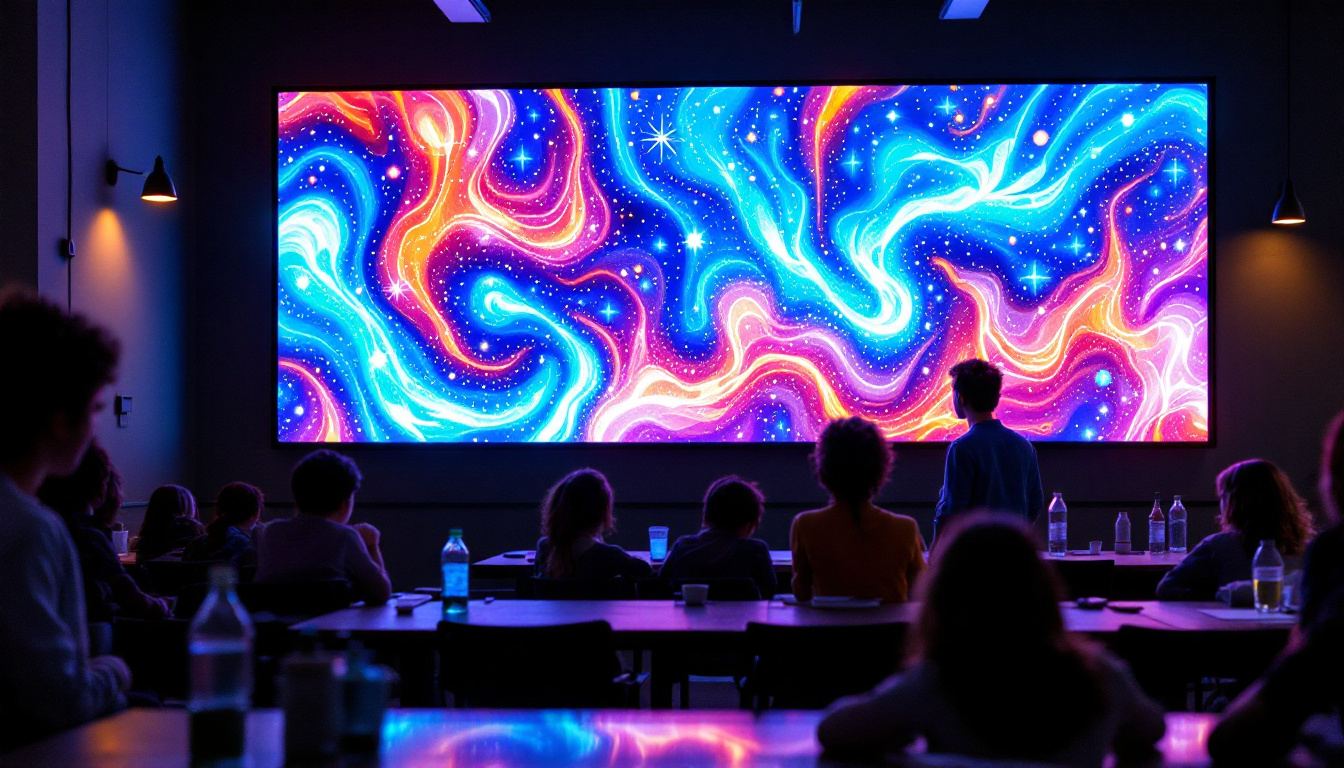In the realm of modern electronics, LED displays have become ubiquitous, transforming the way information is presented across various platforms. From smartphones to large outdoor billboards, the versatility and efficiency of LED technology have made it a preferred choice for countless applications. This article delves into the intricacies of LED displays, exploring their functioning, types, advantages, and future trends.
Understanding LED Technology
LED, or Light Emitting Diode, is a semiconductor device that emits light when an electric current passes through it. This technology has revolutionized the display industry due to its energy efficiency, longevity, and vibrant color output. Unlike traditional incandescent bulbs, LEDs produce light without generating excessive heat, making them a more sustainable option. The shift from incandescent to LED lighting has not only reduced energy consumption significantly but has also led to lower electricity bills for consumers and businesses alike, contributing to a more eco-friendly approach to lighting.
Furthermore, the versatility of LED technology extends beyond simple illumination. It has found applications in various fields, including automotive lighting, architectural lighting, and even horticulture, where specific wavelengths of light can enhance plant growth. The ability to produce a wide spectrum of colors and the compact size of LEDs allow for creative and innovative designs, making them a popular choice in modern lighting solutions.
How LEDs Work
The fundamental principle behind LED operation lies in electroluminescence. When electrons recombine with holes in the semiconductor material, energy is released in the form of photons, which is visible light. The color of the emitted light depends on the materials used in the semiconductor. For instance, different combinations of gallium, arsenide, and phosphor can produce various colors. This tunability in color output is one reason why LEDs are favored in applications such as stage lighting and displays, where precise color rendering is crucial.
Additionally, advancements in LED technology have led to the development of white LEDs, which are commonly used in residential and commercial lighting. These white LEDs are typically created by combining blue LEDs with yellow phosphor, resulting in a warm, inviting light that closely resembles traditional incandescent bulbs. This innovation has made it easier for consumers to transition to energy-efficient lighting without sacrificing the quality of light they prefer.
Components of an LED Display
LED displays consist of several key components that work together to create images and videos. The primary components include:
- LED Modules: These are the building blocks of the display, containing multiple LEDs arranged in a grid format.
- Control System: This system manages the display’s input signals and ensures that the correct images are shown at the right time.
- Power Supply: LEDs require a stable power source to function efficiently, which is provided by a dedicated power supply unit.
In addition to these core components, LED displays often incorporate advanced features such as heat sinks to dissipate heat generated during operation, ensuring longevity and performance. The integration of smart technology has also enhanced the functionality of LED displays, allowing for remote management and real-time updates. This capability is particularly beneficial for advertising and information displays, where content can be changed instantly to reflect current promotions or announcements. As a result, LED technology continues to evolve, providing even more dynamic and engaging visual experiences.
Types of LED Displays
LED displays come in various forms, each tailored for specific applications. Understanding these types helps in selecting the right display for a given purpose.
Direct View LED Displays
Direct View LED displays are composed of individual LEDs that are visible to the viewer. These displays are commonly used in large outdoor advertisements and stadiums. Their high brightness and contrast ratios make them suitable for viewing in direct sunlight. Furthermore, the modular design of direct view LED displays allows for easy scalability; they can be configured to fit any size or shape, making them ideal for creative installations. This adaptability has led to their increasing popularity in public spaces, concerts, and events, where dynamic visual content can engage audiences more effectively.
LED Backlit Displays
LED backlighting is used in LCD screens, where LEDs illuminate the screen from behind. This technology enhances color accuracy and energy efficiency compared to traditional fluorescent backlighting. LED backlit displays are widely used in televisions, computer monitors, and mobile devices. Additionally, advancements in local dimming technology have further improved the performance of LED backlit displays. By adjusting the brightness of specific areas of the screen, these displays can achieve deeper blacks and higher contrast ratios, resulting in a more immersive viewing experience. This feature is particularly beneficial for watching movies or playing video games, where visual detail is crucial.
Organic LED (OLED) Displays
OLED technology utilizes organic compounds that emit light when an electric current is applied. Unlike traditional LEDs, OLEDs do not require a backlight, allowing for thinner and more flexible displays. They are known for their exceptional color reproduction and wide viewing angles, making them popular in high-end televisions and smartphones. Moreover, the self-emissive nature of OLEDs means that each pixel can turn on and off independently, enabling true blacks and vibrant colors that enhance the overall picture quality. This capability has led to innovations in display design, such as curved and foldable screens, which offer new possibilities for consumer electronics and creative applications in advertising and art installations.
Advantages of LED Displays
The rise of LED displays can be attributed to several advantages that set them apart from traditional display technologies. These benefits make them a preferred choice for both consumers and businesses alike.
Energy Efficiency
One of the most significant advantages of LED displays is their energy efficiency. LEDs consume significantly less power compared to incandescent or fluorescent lights, resulting in lower electricity bills and a reduced carbon footprint. This efficiency is especially beneficial for large installations that operate continuously.
Longevity and Durability
LEDs have an impressive lifespan, often exceeding 50,000 hours of use. This longevity reduces maintenance costs and the frequency of replacements. Furthermore, LEDs are more durable and resistant to shock and vibration, making them ideal for outdoor applications where environmental factors can be challenging.
Vibrant Colors and High Contrast
LED displays are known for their ability to produce vibrant colors and deep blacks, thanks to their high contrast ratios. This capability enhances the viewing experience, making images and videos more engaging. The flexibility in color customization allows for a wide range of applications, from advertising to artistic displays.
Applications of LED Displays
The versatility of LED displays has led to their adoption in various sectors. From entertainment to transportation, these displays serve multiple purposes.
Advertising and Billboards
LED billboards have transformed the advertising landscape. Their bright and dynamic displays capture attention, allowing advertisers to showcase vibrant content that can be updated in real-time. This adaptability makes LED billboards an effective medium for marketing campaigns.
Television and Entertainment
In the entertainment industry, LED technology has revolutionized television viewing. High-definition LED TVs offer stunning picture quality, while large LED screens are commonly used in concert venues and sports arenas to enhance the audience experience. The ability to display high-resolution images and videos in real-time is a game-changer for live events.
Transportation and Signage
LED displays are widely used in transportation systems for real-time information dissemination. From train stations to airports, LED screens provide travelers with essential updates, such as arrival and departure times. Additionally, digital road signs utilize LED technology to convey important information to drivers, improving safety and efficiency.
Challenges and Limitations
Despite their numerous advantages, LED displays are not without challenges. Understanding these limitations is crucial for making informed decisions when selecting display technologies.
Cost Considerations
While the prices of LED displays have decreased over the years, they can still be more expensive than traditional display technologies. The initial investment may deter some businesses, particularly small enterprises. However, the long-term savings in energy costs and maintenance often justify the upfront expenditure.
Viewing Angles and Distance
LED displays, particularly those with narrow pixel pitch, can have limited viewing angles. This limitation means that the quality of the image may degrade when viewed from extreme angles. Additionally, the optimal viewing distance must be considered, as closer proximity can reveal pixelation in lower-resolution displays.
Future Trends in LED Display Technology
The future of LED display technology is promising, with ongoing advancements that aim to enhance performance and expand applications. As technology evolves, several trends are emerging that will shape the industry.
MicroLED Technology
MicroLED is an emerging technology that promises to deliver even better performance than traditional LED displays. MicroLEDs are tiny self-emitting diodes that can create high-resolution images with exceptional brightness and color accuracy. This technology is expected to lead to thinner, more flexible displays, paving the way for innovative applications in various sectors.
Integration with Smart Technologies
As smart technology continues to permeate everyday life, LED displays are increasingly being integrated with IoT devices. This integration allows for enhanced interactivity and personalization, enabling users to control displays through smartphones or voice commands. Such advancements will create more engaging and dynamic viewing experiences.
Environmental Sustainability
With growing concerns about environmental sustainability, the LED industry is focusing on developing eco-friendly practices. This includes using recyclable materials in manufacturing and improving energy efficiency further. The shift towards sustainable practices will not only benefit the environment but also appeal to environmentally conscious consumers.
Conclusion
LED displays have undoubtedly transformed the way information is conveyed and consumed. Their energy efficiency, longevity, and vibrant color output make them a preferred choice across various applications, from advertising to entertainment. While challenges exist, ongoing advancements in technology promise to address these limitations and further enhance the capabilities of LED displays.
As the demand for dynamic and engaging content continues to rise, the role of LED displays in shaping the future of communication and information dissemination will only grow. Embracing this technology not only offers immediate benefits but also positions businesses and individuals at the forefront of innovation in the digital age.
Discover LumenMatrix’s Innovative LED Solutions
Ready to elevate your visual communication with the latest in LED technology? Look no further than LumenMatrix, where innovation meets excellence in creating unparalleled visual experiences. Whether you’re seeking to captivate your audience with an Indoor LED Wall Display, make a statement in the great outdoors with an Outdoor LED Wall Display, or drive your message home with Vehicle LED Displays, LumenMatrix has the solution tailored for you. From LED Sports Displays to Custom LED solutions that defy convention, our mission is to empower your brand with displays that dazzle and engage. Don’t miss the opportunity to transform your space with our cutting-edge LED display modules. Check out LumenMatrix LED Display Solutions and join the revolution in digital signage today.

